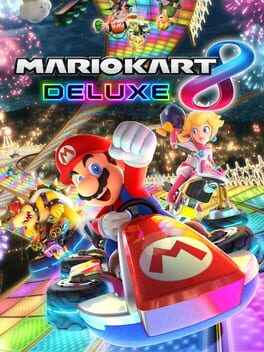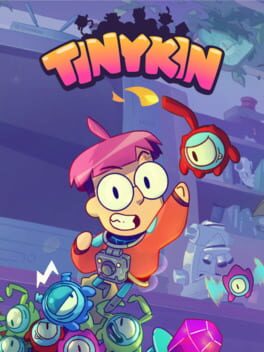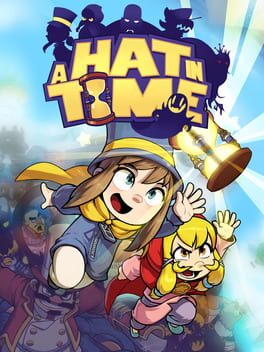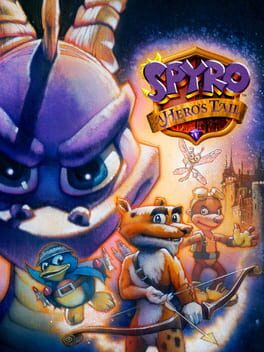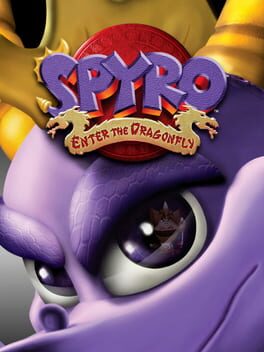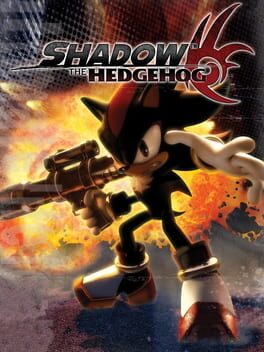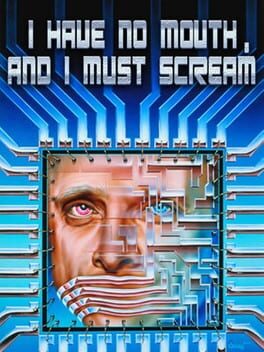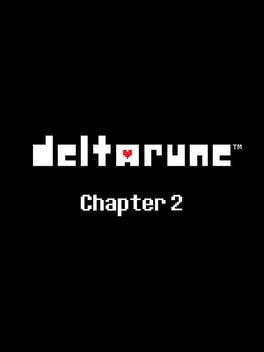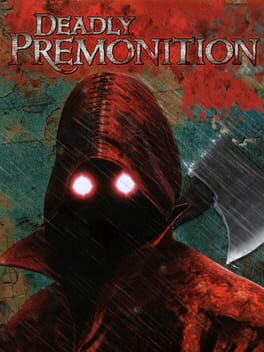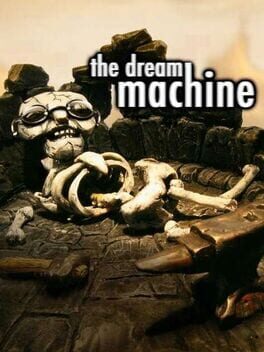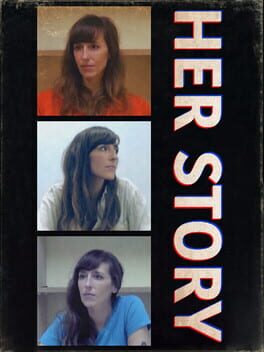SuperAngoose
38 Reviews liked by SuperAngoose
Mario Kart 8 Deluxe
2017
After getting my Switch on launch along with Breath of the Wild, I was excited to see what games the console would have in the future. I bought Master Blaster Zero and eventually The Binding of Isaac for the third time, but a month and a half later Mario Kart 8 Deluxe came out. Now look, this may be a rerelease and all but it was for a portable console. Mario Kart 8 was great but I could only play it at home and with a game like Mario Kart, its more fun to play it on the go with friends. When this came out, I was nearing the end of my Junior year in High School. Let me tell you, me and my friends played this all the time during the span of the rest of my high school experience. We played it in lunch, we played it in study hall, we even played it in class whether it was sneaking it or just when we had free time. This was THE Switch game to play when it came to my friend group alongside Jackbox Party Pack 3. It's just a ton of fun and while I said it was a rerelease, it's not just a lazy port. They not only included the DLC tracks, but they also added some new characters and revamped the battle mode.
I said the character selection was a bit lacking in the original game but the ones they added here are all good. Bowser Jr, King Boo and Dry Bones are all good additions that were in past games. The completely brand-new addition tho is Inkling Girl/Boy. Now, I was a huge Splatoon 1 fan before this so I was hyped when they were added. I mained them a lot when I first played and honestly, they're a perfect crossover addition just cuz Splatoon was originally supposed to be a Mario game which I found funny. This isn't even getting into the characters they added from the booster course pass. Most of those are also great, tho I haven't used them myself since I don't own the booster courses. If you do though, easily the best roster in the series.
The other thing they fixed of course is the battle mode. Easily the worst part of the original game and the worst battle mode I've played, it's really good here. Not as good as Mario Kart DS since there's still no option to have it be elimination rules, however you're not forced into teams like Wii and there's a whopping 5 modes this time around. Balloon battle and coin runners are classics of course. Shine thief makes a return and it's also pretty fun here. Bob-omb blast apparently originated from Double Dash and that's also fun tho definitely the most chaotic of the bunch. The brand new mode this time around is renegade roundup and its basically cops and robbers. Pretty fun mode as well but the real reason these are all actually fun is they gave us battle courses again THANK GOD. The old courses are great and some of the new courses are awesome too like Urchin Underpass. Love to see a little Splatoon representation since it didn't get a race track.
So there you go, the character selection was expanded and while not my favorite battle mode, the battle mode was made actually fun again. The only other thing they added, and they added it 5 years after deluxe came out, are the booster courses. Now I don't own them but my good friend Quent has the expansion pass so along with him and my friend wheatie, we played a bunch of online races for this review and I was able to play pretty much all the courses I wanted to. I didn't play them all but I can see the course quality varies greatly. You have some really half assed tracks and then you have really great ones like Yoshi's Island or SNES Bowser's Castle. A lot of the returning ones are Wii courses which is a plus too. Obviously most of these are just straight up ported from Tour and the visuals on a lot of them are pretty unacceptable compared to the base game but, if you don't care about then then the value of 48 tracks for $25 is great. That's basically 50 cents a track plus the added characters. Not only that but they added the ability to choose custom items, plus a music player in the main menu.
With the slightly better character roster and the MUCH better battle mode, I can say this is definitely THE definite Mario Kart. Though I may end up liking Wii a tad bit more now due to it's wacky physics. Either way, definitely a must have as a Switch owner and as a Mario Kart fan.
Well, that's the end of the Mario Kart marathon everyone unless I end up actually playing Tour lol. Been playing Persona 3 FES this whole time alongside these games and I'm in December now so I think I'm nearing the end of it, stay tuned for that review!
I said the character selection was a bit lacking in the original game but the ones they added here are all good. Bowser Jr, King Boo and Dry Bones are all good additions that were in past games. The completely brand-new addition tho is Inkling Girl/Boy. Now, I was a huge Splatoon 1 fan before this so I was hyped when they were added. I mained them a lot when I first played and honestly, they're a perfect crossover addition just cuz Splatoon was originally supposed to be a Mario game which I found funny. This isn't even getting into the characters they added from the booster course pass. Most of those are also great, tho I haven't used them myself since I don't own the booster courses. If you do though, easily the best roster in the series.
The other thing they fixed of course is the battle mode. Easily the worst part of the original game and the worst battle mode I've played, it's really good here. Not as good as Mario Kart DS since there's still no option to have it be elimination rules, however you're not forced into teams like Wii and there's a whopping 5 modes this time around. Balloon battle and coin runners are classics of course. Shine thief makes a return and it's also pretty fun here. Bob-omb blast apparently originated from Double Dash and that's also fun tho definitely the most chaotic of the bunch. The brand new mode this time around is renegade roundup and its basically cops and robbers. Pretty fun mode as well but the real reason these are all actually fun is they gave us battle courses again THANK GOD. The old courses are great and some of the new courses are awesome too like Urchin Underpass. Love to see a little Splatoon representation since it didn't get a race track.
So there you go, the character selection was expanded and while not my favorite battle mode, the battle mode was made actually fun again. The only other thing they added, and they added it 5 years after deluxe came out, are the booster courses. Now I don't own them but my good friend Quent has the expansion pass so along with him and my friend wheatie, we played a bunch of online races for this review and I was able to play pretty much all the courses I wanted to. I didn't play them all but I can see the course quality varies greatly. You have some really half assed tracks and then you have really great ones like Yoshi's Island or SNES Bowser's Castle. A lot of the returning ones are Wii courses which is a plus too. Obviously most of these are just straight up ported from Tour and the visuals on a lot of them are pretty unacceptable compared to the base game but, if you don't care about then then the value of 48 tracks for $25 is great. That's basically 50 cents a track plus the added characters. Not only that but they added the ability to choose custom items, plus a music player in the main menu.
With the slightly better character roster and the MUCH better battle mode, I can say this is definitely THE definite Mario Kart. Though I may end up liking Wii a tad bit more now due to it's wacky physics. Either way, definitely a must have as a Switch owner and as a Mario Kart fan.
Well, that's the end of the Mario Kart marathon everyone unless I end up actually playing Tour lol. Been playing Persona 3 FES this whole time alongside these games and I'm in December now so I think I'm nearing the end of it, stay tuned for that review!
Tinykin
2022
playing this game reminded me of eating a pack of oreos. everything melts into a sugary mess the minute you put it in your mouth and before you can stop yourself you've eaten all 3 sleeves and consumed 2000 calories but somehow don't feel full. overall this pack of oreos was pretty cute and i liked the music.
A Hat in Time
2017
as a child, 3d platformers comprised some of my most formative gaming experiences. their sprawling worlds, eccentric characters, and seemingly endless secrets were a refuge for a quiet, geeky kid like myself. now an adult loser, i was excited to play a game that attempts to recapture both the style and substance of these iconic games of my youth, but unfortunately a hat in time misses the mark on both fronts for me.
mechanically, i actually really like how it feels controlling hat kid. in particular, the 4-part jump, double jump, dash, dash cancel allows for a lot of variety while traversing and leads to some pretty exhilarating "oh shit oh shit am i going to make it" leap-of-faith style gambits. where ahit stumbles is how this toolkit interacts with the world around it. the game is plagued with odd nooks and crannies that cause the camera to get stuck at frustrating angles, geometry that arbitrarily doesn't obey the same rules as the things around it, invisible walls for any player who dares to try and open her up a bit (often requiring a reset to get unstuck), and a generally muddled sense of conveyance (find me a mario game where there are some lanterns that you can grapple and some that you can't and also they look the same). all the sharp edges sanded off by overworked japanese programmers who now have very wrought relationships with their adult children in the 3d platformers of yore are still present here and they're poking me in the eye.
the titular hat mechanic is also a bit of a letdown. none of the hats alter gameplay in as exciting a way as a mumbo transformation or a cappy capture and most boil down to a bad metroidvania's "now i can open the doors that are green". i spent the vast majority of the game with the hat that makes you move fast equipped, only switching when i came across an obstacle that required another specific hat.
(also, the title "a hat in time". it has always sounded to me like this is supposed to be a pun or something, but thinking about it now what is it a pun of? a stitch in time? a wrinkle in time? i don't get it. [docking one full star for this point])
ahit attempts to recreate the overall vibe of older 3d platformers to similarly mixed effect. the developers clearly wanted to conjure the same feeling these games gave when entering a new location or meeting a new character, but in an effort to plant their flag in entirely virgin ground have resorted to making EVERYTHING really weird. but when everything is weird, nothing is weird. the reason things like il piantissimo or cloud cuckooland stick out in my mind is because they "broke the rules" of an otherwise grounded game. ahit's world of beachside greco-russo-italian gangsters and funky penguin dj movie directors, while certainly unique, feels like a bit of a mishmash absent any more familiar landmarks of the genre (jungle level).
the game feels simultaneously too big for what the developers could handle polishing to a mirror sheen (oh you're telling me the project unexpectedly made 10x what it was asking for in its kickstarter campaign wow i didn't know that i just- you're telling me now for the first time) and too small to really evoke the same feelings as the games it attempts to mimic (only 4 real-ass full-ass levels and 40 of the main collectible [not to mention one sub collectible that becomes pointless after you collect slightly over half of them and another that unlocks purely cosmetic items and whose collection progress isn't even tracked anywhere in the UI???? {i know things with collectibles got a little out of hand towards the end of the 3d platformer's heyday, but undeniably part of the draw of these games has always been collecting a bunch of fucking schtuff. give me, like, at least 100 stuff to collect, please}])
this game makes an interesting companion to yooka-laylee. both released around the same time, had wildly successful kickstarter campaigns, and attempted to resurrect the glory days of games where one of the characters in the 6th level was a chair that had a face and was named like "chairbo" or something. they are also both not very good, but the sliders for why that is are in totally different places for each game.
Ultimately, though I wouldn't use one of A Hat in Time's shiny Time Pieces to roll back the over 10 hours I spent completing it, I find myself wondering wistfully what might have been done differently to achieve a truly tidafjkl;sdfna;sdf whatever
mechanically, i actually really like how it feels controlling hat kid. in particular, the 4-part jump, double jump, dash, dash cancel allows for a lot of variety while traversing and leads to some pretty exhilarating "oh shit oh shit am i going to make it" leap-of-faith style gambits. where ahit stumbles is how this toolkit interacts with the world around it. the game is plagued with odd nooks and crannies that cause the camera to get stuck at frustrating angles, geometry that arbitrarily doesn't obey the same rules as the things around it, invisible walls for any player who dares to try and open her up a bit (often requiring a reset to get unstuck), and a generally muddled sense of conveyance (find me a mario game where there are some lanterns that you can grapple and some that you can't and also they look the same). all the sharp edges sanded off by overworked japanese programmers who now have very wrought relationships with their adult children in the 3d platformers of yore are still present here and they're poking me in the eye.
the titular hat mechanic is also a bit of a letdown. none of the hats alter gameplay in as exciting a way as a mumbo transformation or a cappy capture and most boil down to a bad metroidvania's "now i can open the doors that are green". i spent the vast majority of the game with the hat that makes you move fast equipped, only switching when i came across an obstacle that required another specific hat.
(also, the title "a hat in time". it has always sounded to me like this is supposed to be a pun or something, but thinking about it now what is it a pun of? a stitch in time? a wrinkle in time? i don't get it. [docking one full star for this point])
ahit attempts to recreate the overall vibe of older 3d platformers to similarly mixed effect. the developers clearly wanted to conjure the same feeling these games gave when entering a new location or meeting a new character, but in an effort to plant their flag in entirely virgin ground have resorted to making EVERYTHING really weird. but when everything is weird, nothing is weird. the reason things like il piantissimo or cloud cuckooland stick out in my mind is because they "broke the rules" of an otherwise grounded game. ahit's world of beachside greco-russo-italian gangsters and funky penguin dj movie directors, while certainly unique, feels like a bit of a mishmash absent any more familiar landmarks of the genre (jungle level).
the game feels simultaneously too big for what the developers could handle polishing to a mirror sheen (oh you're telling me the project unexpectedly made 10x what it was asking for in its kickstarter campaign wow i didn't know that i just- you're telling me now for the first time) and too small to really evoke the same feelings as the games it attempts to mimic (only 4 real-ass full-ass levels and 40 of the main collectible [not to mention one sub collectible that becomes pointless after you collect slightly over half of them and another that unlocks purely cosmetic items and whose collection progress isn't even tracked anywhere in the UI???? {i know things with collectibles got a little out of hand towards the end of the 3d platformer's heyday, but undeniably part of the draw of these games has always been collecting a bunch of fucking schtuff. give me, like, at least 100 stuff to collect, please}])
this game makes an interesting companion to yooka-laylee. both released around the same time, had wildly successful kickstarter campaigns, and attempted to resurrect the glory days of games where one of the characters in the 6th level was a chair that had a face and was named like "chairbo" or something. they are also both not very good, but the sliders for why that is are in totally different places for each game.
Ultimately, though I wouldn't use one of A Hat in Time's shiny Time Pieces to roll back the over 10 hours I spent completing it, I find myself wondering wistfully what might have been done differently to achieve a truly tidafjkl;sdfna;sdf whatever
Vampire Survivors
2021
Fear & Hunger
2018
A hard game to describe and an even more difficult one to quantify. What started as something I deeply admired as a murky, occasionally moving exploration of capitalism’s inherent stranglehold on middle to lower class Americans slowly transformed into one of the most consuming and gorgeous works of art I’ve experienced in any medium. With each act, the ensemble growing in number and the mystery increasingly folding in on itself through magical surrealist imagery and an ambient rural atmosphere, I found myself less so questioning the meaning of the thematic poignancy behind these elements and just succumbed to the emotional prowess and tenderness on display. Albeit refreshingly nuanced in these expressions of grief, longing, regret, and so on it’s in the game’s pronounced moments where it shines the most and gives levity to the entirety of the narrative. “Too Late to Love You” may be the iconic standout but playing Xanadu, deconstructing the play in “The Entertainment”, discovering the haunted distillery, and listening to voicemail messages on a barge proved just as profound amongst a dozen or so other cherished sequences.
I’m all the more happy I ended up settling in for what would prove to be an overwhelmingly dense masterwork in storytelling and atmosphere because there were times when the straying gameplay tested my attention span with its meandering conversations and cumbersome movements. Even as I write this review my mind spins with the dizzying tangents this game takes the player on; components unique to this medium solely because of its interactivity. It just can’t be done on film or prose alone. The stunning visual compositions and lush soundtrack are only gravy to what Cardboard Computer accomplishes with their rich screenplay and cleverly nuanced direction. It’s all meant to serve a greater purpose that transcends being a “novel” or a “film” or a “play”, let alone a video game. Its potent fluidity between all of them is what makes it the powerful experience that it is and yet it ultimately pitches its tent as a game.
While it spends its first two acts building up a proper narrative and giving the player a decent amount of lore and character backstory to chew on to push them through, after that brief initiation the game becomes an odyssey-like trek into the waking unknown, culminating in what can only be described as Heart of Darkness but make it tranquil space country vibes (with a dash of unease). A purgatorial journey on the Echo River where the mundane stops along the way unknowingly determine the fate of society as these characters know it, leading to an ethereal apocalyptic landscape where God is an overseeing cat and the player a director to this sweeping game of life. Our choices, neither right or wrong, are about providing context to the jinxed voids presented before us. They have their lives and have made their decisions, however exist to be defined by the player. Maybe those words are nonsense to the uninitiated who haven’t played this or maybe I missed the point but it’s how it made me feel right now.
This is a game that demands patience and rewards those willing to take their time with it. It wants to be felt in a spiritual sense rather than intently understood through an intellectual lens and even then to dissect the game’s many literary, cinematic, theatrical, religious, etc influences and references would probably prove just as fulfilling. This is as much a video game about creating and commodifying art and the futile process behind it all as it is one about studying and making sense of it. Some call it Lynchian in that respect but I’m as much inclined to compare it to the films of Terrence Malick; wandering souls attempting to reason with the reality of death and the emotional toll it takes to wrestle with mortality. It’s amazing how despite containing obvious homage to the original Twin Peaks, Kentucky Route Zero is as much a spiritual precursor to what Lynch would do with The Return. So much of what those 18 hours achieves can be found in here in more ways than one. There’s no future conversation about this medium as an artistic form without these five acts and five interludes somewhere within it. I feel as though a decade or two from now we'll still be trying to catch up.
I’m all the more happy I ended up settling in for what would prove to be an overwhelmingly dense masterwork in storytelling and atmosphere because there were times when the straying gameplay tested my attention span with its meandering conversations and cumbersome movements. Even as I write this review my mind spins with the dizzying tangents this game takes the player on; components unique to this medium solely because of its interactivity. It just can’t be done on film or prose alone. The stunning visual compositions and lush soundtrack are only gravy to what Cardboard Computer accomplishes with their rich screenplay and cleverly nuanced direction. It’s all meant to serve a greater purpose that transcends being a “novel” or a “film” or a “play”, let alone a video game. Its potent fluidity between all of them is what makes it the powerful experience that it is and yet it ultimately pitches its tent as a game.
While it spends its first two acts building up a proper narrative and giving the player a decent amount of lore and character backstory to chew on to push them through, after that brief initiation the game becomes an odyssey-like trek into the waking unknown, culminating in what can only be described as Heart of Darkness but make it tranquil space country vibes (with a dash of unease). A purgatorial journey on the Echo River where the mundane stops along the way unknowingly determine the fate of society as these characters know it, leading to an ethereal apocalyptic landscape where God is an overseeing cat and the player a director to this sweeping game of life. Our choices, neither right or wrong, are about providing context to the jinxed voids presented before us. They have their lives and have made their decisions, however exist to be defined by the player. Maybe those words are nonsense to the uninitiated who haven’t played this or maybe I missed the point but it’s how it made me feel right now.
This is a game that demands patience and rewards those willing to take their time with it. It wants to be felt in a spiritual sense rather than intently understood through an intellectual lens and even then to dissect the game’s many literary, cinematic, theatrical, religious, etc influences and references would probably prove just as fulfilling. This is as much a video game about creating and commodifying art and the futile process behind it all as it is one about studying and making sense of it. Some call it Lynchian in that respect but I’m as much inclined to compare it to the films of Terrence Malick; wandering souls attempting to reason with the reality of death and the emotional toll it takes to wrestle with mortality. It’s amazing how despite containing obvious homage to the original Twin Peaks, Kentucky Route Zero is as much a spiritual precursor to what Lynch would do with The Return. So much of what those 18 hours achieves can be found in here in more ways than one. There’s no future conversation about this medium as an artistic form without these five acts and five interludes somewhere within it. I feel as though a decade or two from now we'll still be trying to catch up.
Spyro: A Hero's Tail
2004
Shadow the Hedgehog
2005
Fallout: New Vegas
2010
In twenty or thirty years, if the world's still around by then, I strongly suspect that Bethesda RPGs will exist in that particular space where those of us who lived through them insist to a skeptical audience of video game history enthusiasts how important they were. "You have to understand," we'll say, "I know they're unbelievably glitchy and they play like a bicycle with hexagonal wheels, but these were huge. EVERYONE played these." For all their flaws, these games defined a particular ideal of gaming experience not so much by what they were as by what they aspired (and inevitably failed) to be.
Of course, New Vegas isn't a Bethesda game. It was developed by Obsidian Entertainment and it has a distinctly different design sensibility. At the same time, it clearly is a Bethesda game: the expectations created by Fallout 3 and the constraints imposed by the engine itself make the moment-to-moment experience of playing much more alike its siblings than it is different. And so it exists in the liminal space of the cover artist, stuck with a song but still given the freedom to put their own spin on it.
New Vegas's spin is grand political struggle. Although other Bethesda games have their obligatory world-altering main quests, none extend so deeply through the vast game world or make it seem so much like a real place where real people are struggling with and against one another to make the best of a bad situation. The way it seeks to breathe life into the Mojave Wasteland is the heart of what sets New Vegas apart. Proper Bethesda games grasp desperately at an ideal of "realism" defined by interactive stuff: in the real world you go anywhere, talk to anyone, and touch anything you see, so the most realistic games must be huge maps littered with stuff you can pick up and people who will talk to you about arrows and knees.
My friend Bret and I call this approach "lumpy realism", after the mountain of discrete objects it engenders. And while New Vegas is beholden to lumpiness, it's mostly a trapping of its ancestry. It's more interested in what I'll call "decisive realism", the promise that the choices you make as a player matter in some deep sense. This is still an ideal whose shortcomings will always show the seams of artificiality, but it's also one that makes space for writing and plotting, the unsung heroes of the RPG genre.
For my money though, the most interesting thing about New Vegas is less what it tries to do and more the negative space left behind by what it doesn't try to do. Because it's less interested in leaving interactive stuff all over the place (and possibly because of development time constraints), it has a number of places that just exist. They're not part of a quest, they don't have lore, they're not meaningfully interactive in any way. They're just spaces and models and textures that exist for you to be near and look at. That's a sort of realism too, even if it's not intentional. After all, even though I could interact with anything in the world, in reality, I usually choose to just take it in.
Of course, New Vegas isn't a Bethesda game. It was developed by Obsidian Entertainment and it has a distinctly different design sensibility. At the same time, it clearly is a Bethesda game: the expectations created by Fallout 3 and the constraints imposed by the engine itself make the moment-to-moment experience of playing much more alike its siblings than it is different. And so it exists in the liminal space of the cover artist, stuck with a song but still given the freedom to put their own spin on it.
New Vegas's spin is grand political struggle. Although other Bethesda games have their obligatory world-altering main quests, none extend so deeply through the vast game world or make it seem so much like a real place where real people are struggling with and against one another to make the best of a bad situation. The way it seeks to breathe life into the Mojave Wasteland is the heart of what sets New Vegas apart. Proper Bethesda games grasp desperately at an ideal of "realism" defined by interactive stuff: in the real world you go anywhere, talk to anyone, and touch anything you see, so the most realistic games must be huge maps littered with stuff you can pick up and people who will talk to you about arrows and knees.
My friend Bret and I call this approach "lumpy realism", after the mountain of discrete objects it engenders. And while New Vegas is beholden to lumpiness, it's mostly a trapping of its ancestry. It's more interested in what I'll call "decisive realism", the promise that the choices you make as a player matter in some deep sense. This is still an ideal whose shortcomings will always show the seams of artificiality, but it's also one that makes space for writing and plotting, the unsung heroes of the RPG genre.
For my money though, the most interesting thing about New Vegas is less what it tries to do and more the negative space left behind by what it doesn't try to do. Because it's less interested in leaving interactive stuff all over the place (and possibly because of development time constraints), it has a number of places that just exist. They're not part of a quest, they don't have lore, they're not meaningfully interactive in any way. They're just spaces and models and textures that exist for you to be near and look at. That's a sort of realism too, even if it's not intentional. After all, even though I could interact with anything in the world, in reality, I usually choose to just take it in.
Deltarune: Chapter 2
2021
in the Grand Scope of video games, Undertale and Deltarune are not super innovative in their gameplay or anything by any stretch, more of just a remixing and repurposing of existing things in a very good and novel way. however, they are the ultimate Hangout Games, where you just want to pop into a world for a little bit and hear the funny little jokes that your friends tell as you walk around hanging out, doing nothing.
i would just play 100 of these. they are the "Falafel Wrap + Fries" of video games: extremely consistent, always delicious, filling, warms your heart, reminds you of better times
i would just play 100 of these. they are the "Falafel Wrap + Fries" of video games: extremely consistent, always delicious, filling, warms your heart, reminds you of better times
Deadly Premonition
2010
When your character crashes crashes his car in the game's opening, he misses two squirrels who scurry off and make a... monkey sound?! I think this perfectly summarises Deadly Premonition, in all its stengths and weaknesses.
Considered by many to be the 'best worst game of all time' and Guiness record holder of 'Most Critically Polarizing Survival Horror,' Deadly Premonition might be the gaming equivalent of the 2003 cult movie The Room. They have plenty in common, mainly that every creative decision feels so incredibly wrongfooted that you question how it was even greenlit.
Any development team would hear those monkey squirrels and scratch their heads, as much as every gamer has subsequently. This game might have a fabulous team behind it, but, creatively, this is evidently the work of an individual.
Just as Deadly Premonition is gaming's answer to The Room, Hidetaka "SWERY" Suehiro might be its answer to Tommy Wiseau: an eccentric and intellectually contentious visionaire whose name is planted everywhere in the opening credits.
I think the game's cult status comes from that distinct personality, as much as the game's obvious inspirations (it's basically Twin Peaks with the gameplay of Shenmue without either's subtlety). Yes, the characters are dumb, the story is nonsensical, the sound is jarring, the music is annoying, the world design is derivative, the gameplay is clunky, the enemies are grating and the sexual politics are questionable - I could go on and on, almost as long as some of the cutscenes - but all of these things do one thing right, that is they form a wholistic sense of place, a unique atmosphere and a singular vision of its world, though a strange one. If all of these things were the culmination of a group effort, rather than an individual, it would show and immediately be less compelling. When you watch The Room, you never doubt that literally no one but Wiseau is at the wheel, it is the same here.
There are actually some aspects worthy of standard merit here. I am surprised to admit that some moments in this game are downright creepy and the plot becomes somehow even more unhinged in the final third - the game is at its best here because it eventually ditches the pretentions of being a Twin Peaks game and finds its two left feet placed firmly in the realm of Japanese weirdness.
Ultimately, it's not a 'good' game in the traditional sense, but instead a fascinating work of art... for all the wrong reasons.
Considered by many to be the 'best worst game of all time' and Guiness record holder of 'Most Critically Polarizing Survival Horror,' Deadly Premonition might be the gaming equivalent of the 2003 cult movie The Room. They have plenty in common, mainly that every creative decision feels so incredibly wrongfooted that you question how it was even greenlit.
Any development team would hear those monkey squirrels and scratch their heads, as much as every gamer has subsequently. This game might have a fabulous team behind it, but, creatively, this is evidently the work of an individual.
Just as Deadly Premonition is gaming's answer to The Room, Hidetaka "SWERY" Suehiro might be its answer to Tommy Wiseau: an eccentric and intellectually contentious visionaire whose name is planted everywhere in the opening credits.
I think the game's cult status comes from that distinct personality, as much as the game's obvious inspirations (it's basically Twin Peaks with the gameplay of Shenmue without either's subtlety). Yes, the characters are dumb, the story is nonsensical, the sound is jarring, the music is annoying, the world design is derivative, the gameplay is clunky, the enemies are grating and the sexual politics are questionable - I could go on and on, almost as long as some of the cutscenes - but all of these things do one thing right, that is they form a wholistic sense of place, a unique atmosphere and a singular vision of its world, though a strange one. If all of these things were the culmination of a group effort, rather than an individual, it would show and immediately be less compelling. When you watch The Room, you never doubt that literally no one but Wiseau is at the wheel, it is the same here.
There are actually some aspects worthy of standard merit here. I am surprised to admit that some moments in this game are downright creepy and the plot becomes somehow even more unhinged in the final third - the game is at its best here because it eventually ditches the pretentions of being a Twin Peaks game and finds its two left feet placed firmly in the realm of Japanese weirdness.
Ultimately, it's not a 'good' game in the traditional sense, but instead a fascinating work of art... for all the wrong reasons.
The Dream Machine
2012
The Dream Machine is such an unusual game. The plasticine world is beautiful and the general aesthetic is unsettling. The puzzles are excellent and feel rewarding to figure out and as the story progresses, the game becomes conceptually interesting as it tries to give tangible forms to abstract ideas in each residents dreams. The ending is rather abrupt in my opinion as the game explores every character through their dreams other than you, the main character. There is very little to show the personality of Victor Neff in the first 4 episodes, even in his dream which was merely the tutorial. When we reach the last episode, which is arguably the most conceptually abstract, his personality feels like it shifts abruptly from loving and responsible husband to desperate to escape from his responsibilities. Although the ending is rather anti climactic, I can certainly appreciate the choices.
It's definitely worth a go.
It's definitely worth a go.
Her Story
2015
Were you paying attention? Well don't worry the game will reveal everything at the end. This story is well thought out and executed but you don't need to be observant to see where its headed and just to make sure you get it, the game makes sure you couldn't have missed anything.
It's a still a good game.
It's a still a good game.
